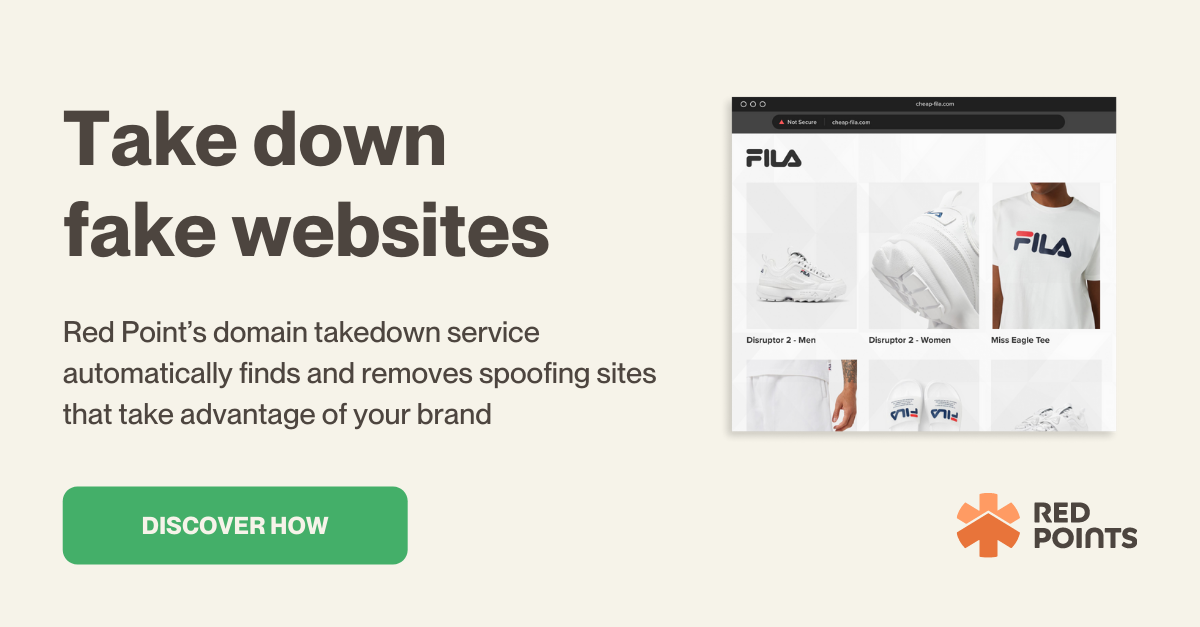Ecommerce fraud is on the rise as bad actors find newer ways every day to scam customers through fake online shopping sites. In fact, according to a study, eCommerce fraud has been increasing at a rate of 30 percent, year over year, since 2018.
While the pandemic forced brands to take their business online, it also proved to be the perfect opportunity for scammers to take advantage of the growing number of online customers.
According to another report by the FTC, internet shopping fraud doubled between December 2019 and May 2020.
Brands now have to fight on two fronts – They need to protect themselves from becoming a target of scammers and they also have to protect their customers from fraud to ensure their reputation doesn’t get damaged.
Letting scammers run fake online stores in your brand’s name can be a kiss of death for your business as it can drastically affect customer loyalty and decrease sales.
In this article, we discuss
- What are fake online shopping sites?
- How do scammers get away with fake shopping sites?
- Steps to report fake online shopping websites.

What are fake online shopping sites?
Fake online websites are set up by scammers to trick customers into believing they are on a genuine website and to lure them into making purchases to steal confidential information or sell counterfeit goods. Anyone with access to a computer system and the internet can set up an online store under any name they want with relative ease.
Most scammers impersonate other brands to make quick profits and to make their entire scam seem more believable. Scammers can copy the entire design of an original brand website and even use a similar URL to trick customers into thinking they have reached the right place. This is called brand impersonation, which is a form of phishing attack where hackers and scammers pretend to be from a legitimate and trusted business.
The risks associated with customers making purchases on a fake website depend on who sets these websites up and what their intentions are, so the risk could be small but it could also potentially be catastrophic. Here are some of the most common reasons behind brand impersonation through fake online shopping sites:
- Steal personal information from customers such as names, addresses, or phone numbers to sell their data in bulk.
- Steal banking information or credit card details to commit fraud or initiate fund transfers.
- Sell counterfeit products or non-existent products that never end up getting delivered.
- Damage a business’s reputation intentionally.
How do scammers create fake online shopping sites?
Lookalike domains
Scammers buy domains that look similar to the domains of known, big brands through cybersquatting or typosquatting. This also makes it easier for scammers to get more customers to trust their fake website and make purchases on it.
- Cybersquatting refers to registering domains that squat over an individual’s or business’s trademark. While most scammers cyber squat to sell the domain back to the trademark owner at a higher price, others may use these cyber-squatted domains to impersonate the business and drive traffic away from it. This is a common pain for brands that have success in one market initially, but before they can set up web domains in foreign markets (such as .uk, .de, or .es) when they want to expand, someone already in that market claims what would have been your business’s version of a local domain.
- Typosquatting refers to registering domain names that are similar to other brand names but with common typing errors or spelling mistakes. So when a prospective customer searches for the brand name with a typo, they end up reaching a fake website instead. Since the fake website looks the same as the original, customers can get easily tricked. One simplified example of this would be how facebook.com also owns the domain of gacebook.com. This is because if that very similar domain was left unclaimed by Facebook, then a scammer or hacker could easily exploit it!
Blackhat SEO
Blackhat SEO involves the use of unethical practices that go against the search engine’s principles to get a website to rank higher on the Search Engine Results Page (SERP). These blackhat techniques can involve cloaking, keyword stuffing, content automation, and suspicious redirects.
After building fake online shopping websites, scammers use blackhat SEO techniques to get their fake sites to rank in the top positions for their targeted keywords. In some cases, the fake websites may even start ranking higher than the original brand’s website.
Blackhat SEO is not recommended because Google penalizes websites that employ these techniques. Nonetheless, it still gives these fake websites a good boost in traffic for a short time, which is more than enough time for fraudsters to pull off their scam and get away with it.
Triangulation fraud
This is a more advanced fraud scheme that is mostly used by experienced scammers to make quick money while making sure their online activity can’t be traced back to them.
Here’s what triangulation fraud involves:
1- Scammers create a fake online website with fake product listings. The product prices are either at a significant price markup or at the actual MRP.
2- Scammers advertise the website to get customers to place orders for their fake product listings.
3- When a customer places an order for a product through a fake website, the scammers get access to all of their personal and banking information.
4- The scammers take the data shared by the customer and use it to buy the same item from a different website. The items bought by the scammer may be genuine, but they are usually priced less than what the scammers charge the customers. In some instances, scammers may even buy a counterfeit product or outdated stock on the customer’s behalf to keep a bigger chunk of the profit.
5- The customer receives the product, not knowing they overpaid for it or that their personal and banking information has been compromised.
Since the customers don’t know they have been scammed, they could eventually blame the brand for overpricing or sending low-quality products.
How to report fake online shopping websites
Contact the website owners
Start by contacting the admin of the fake website to inform them that they are infringing on your intellectual property and they need to shut the website down or you will be taking legal action against them. You can claim copyright infringement if the website owners have copied your website’s content or product images. Similarly, if your brand name or logo has been copied, you can claim trademark infringement.
Get in touch with the website hosting provider
If the website owners fail to respond, you can directly reach out to the web hosting provider that hosts the fake website. You can use the ICANN database to find the name and contact details of the hosting provider.
All legitimate website hosting providers are required to take any kind of infringement claims seriously. Their failure to respond to intellectual property violations after being informed opens them up to litigation as well, if you choose to file a case against the website owners.
File a DMCA takedown notice
A DMCA takedown notice involves officially reporting infringement on a website. The Digital Millennium Copyright Act (DMCA) was put into place in 2000 to support copyright owners and make it easier to enforce copyright laws online.
Sending a cease and desist letter to the fake website owner or web hosting provider serves as the official DMCA notice. However, the takedown process can vary depending on the type of hosting provider and the type of infringement.
File a legal case
You can also report scam websites directly to law enforcement and file a legal case against the website owners to take down the infringement. It can be a very effective step if the fake website has been selling counterfeit products directly.
However, even if you shut down a fake website selling counterfeits, the website may no longer be live, but the counterfeits will still be available somewhere. Scammers will eventually end up opening a new fake website to sell off the counterfeit inventory that they have left. Involving the authorities to track down counterfeits can be a great idea to take down the whole operation.
Use Red Points for automatic website takedown
Protecting your business and taking down all the fake online websites that pop up every day can quickly become time-consuming and challenging. It’s not something you can handle on your own, especially when your core responsibilities include running and managing your business.
Red Points’ Domain Takedown Services can help you take down fake websites automatically in just a matter of minutes. Whether the scammers are stealing your copyrighted content to commit fraud or using your trademark to sell counterfeit products, Red Points can effectively find them, remove the infringing website domains, and even stop repeat infringers by uncovering the scammer’s identity.
What’s next
Fake websites operating under your business’s name can shrink your brand value, reduce customer loyalty, divert website traffic, and even lead to a significant decrease in revenue. Therefore, it is important to take proactive steps to identify and shut down fake websites as soon as they go live, to minimize the damage.
See how you can track and take down fake websites using Red Points’ Domain Takedown Solution








